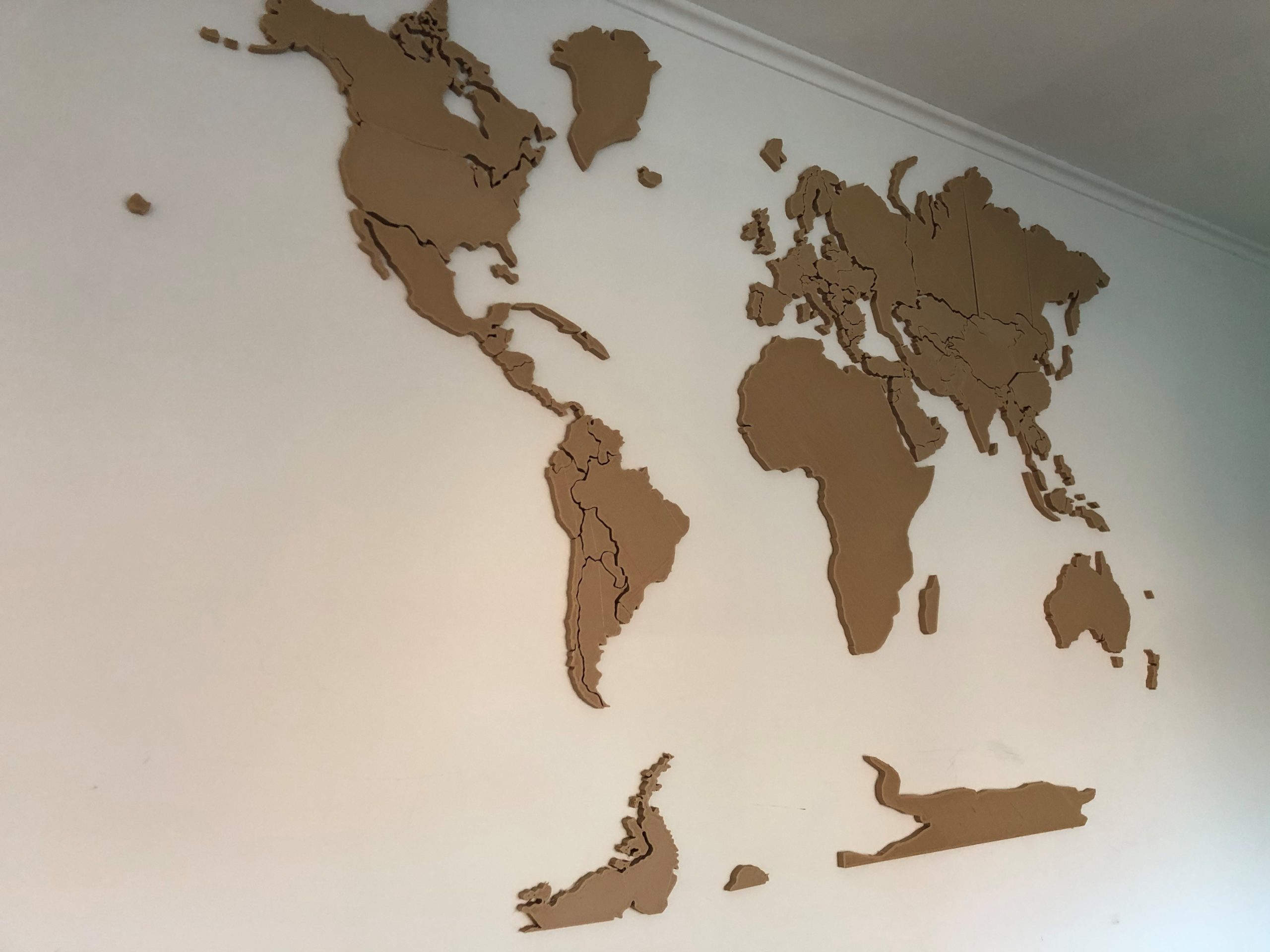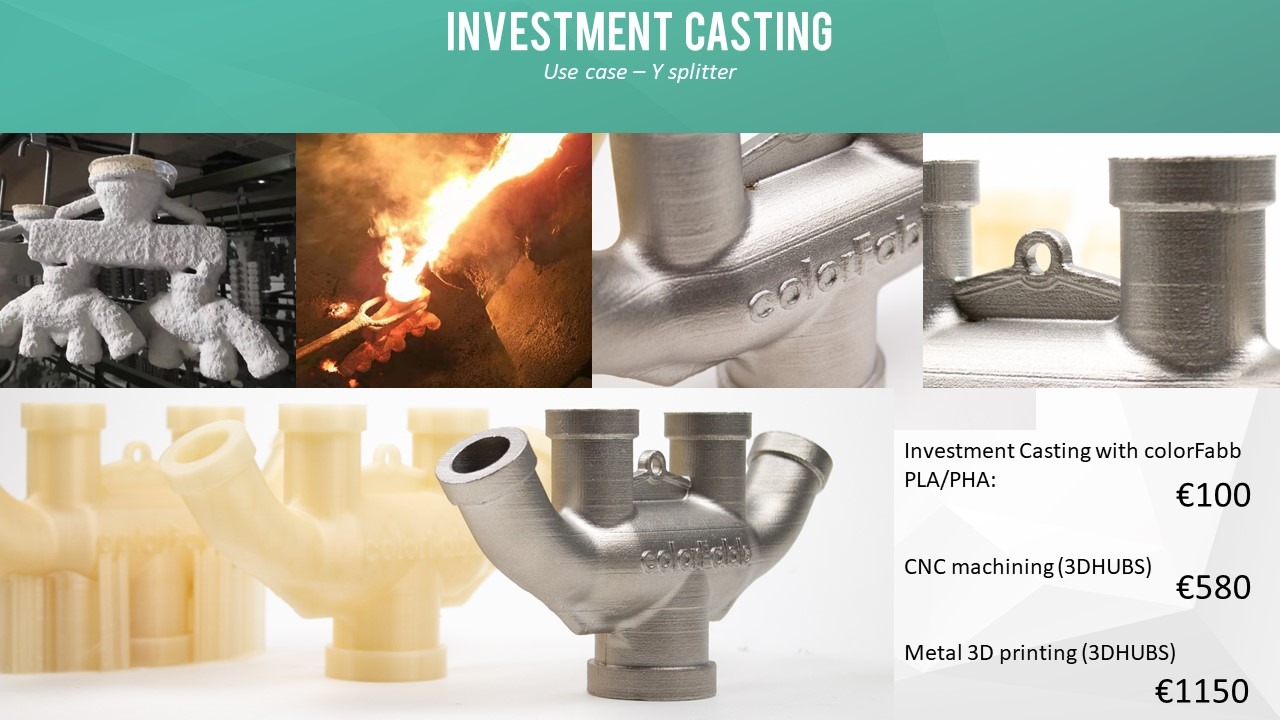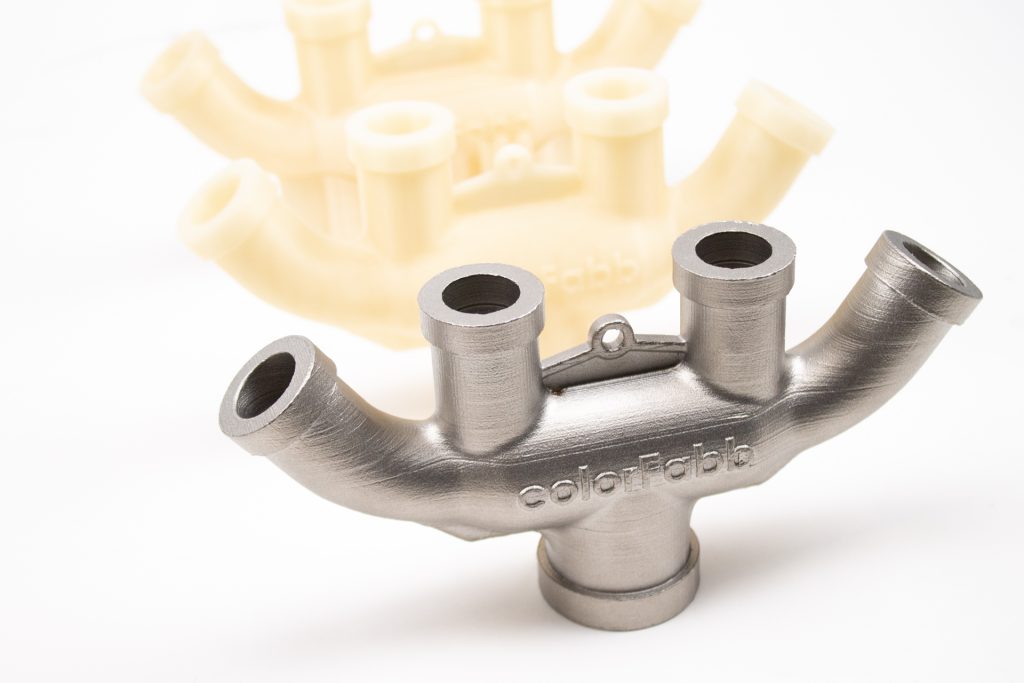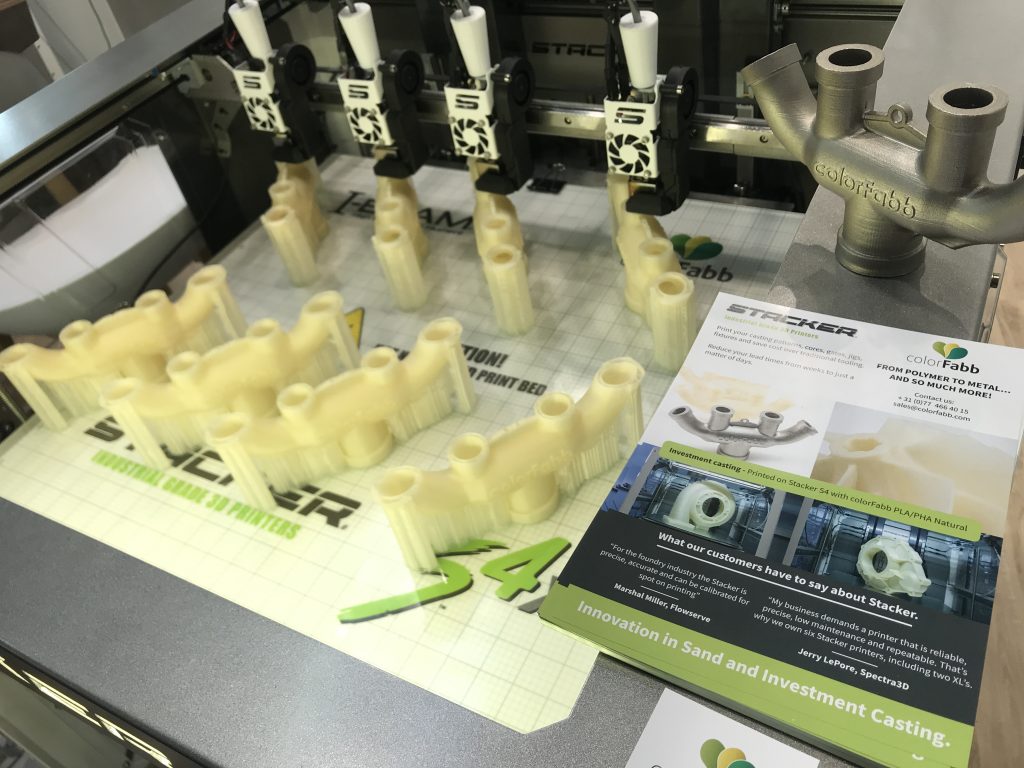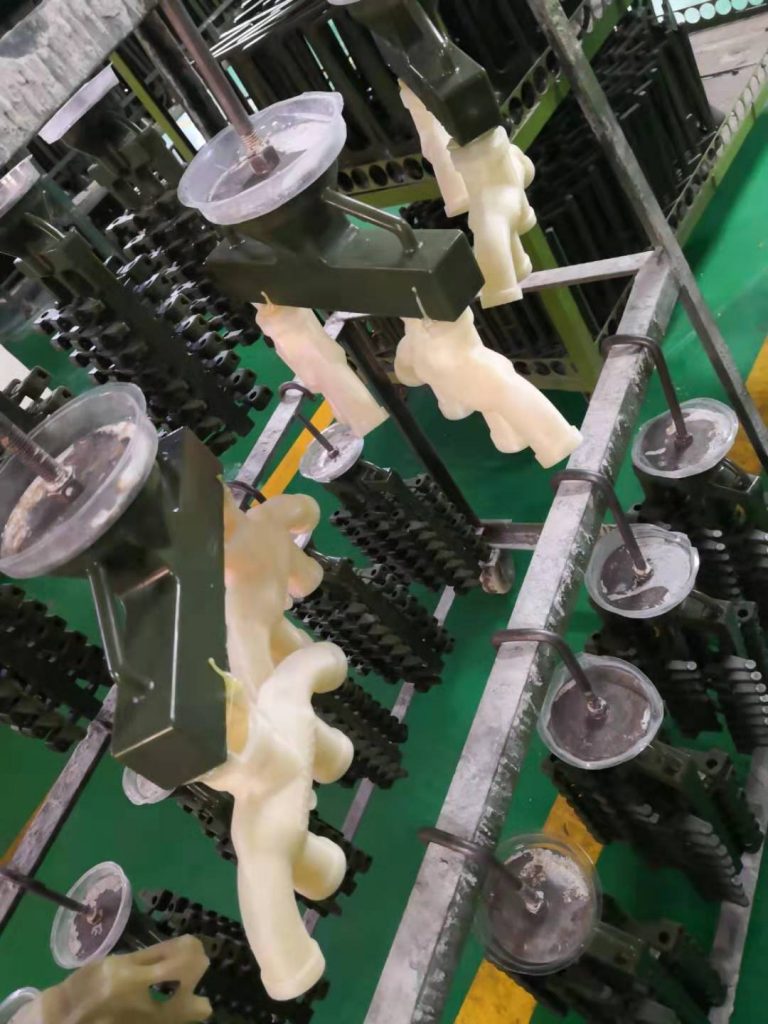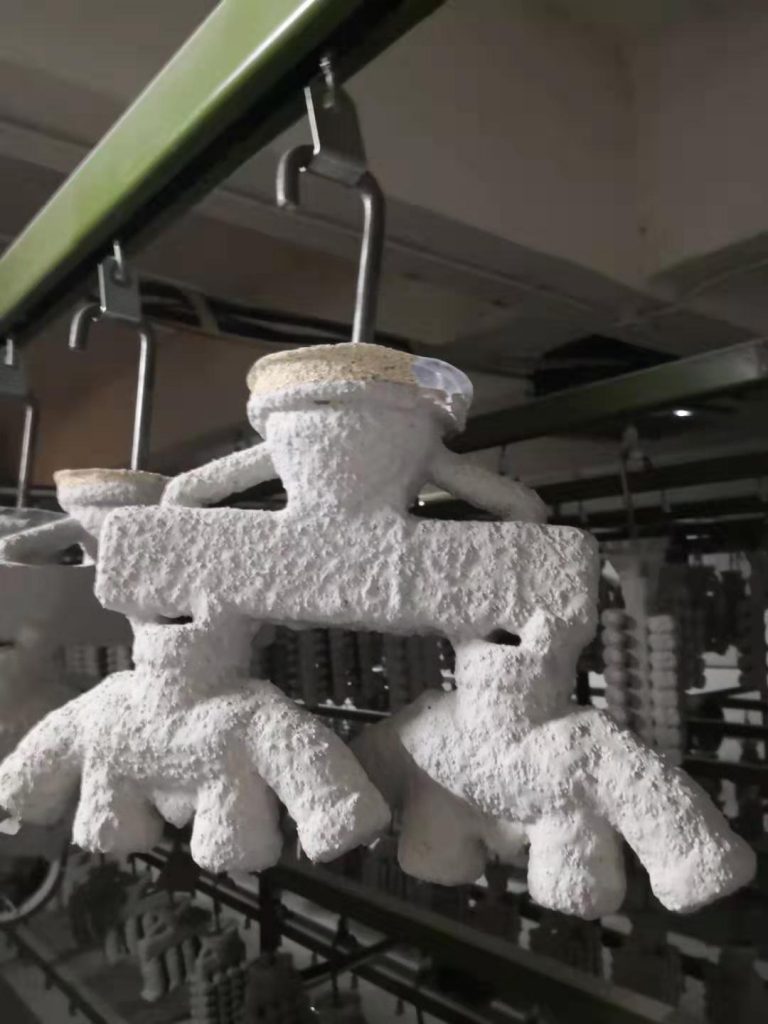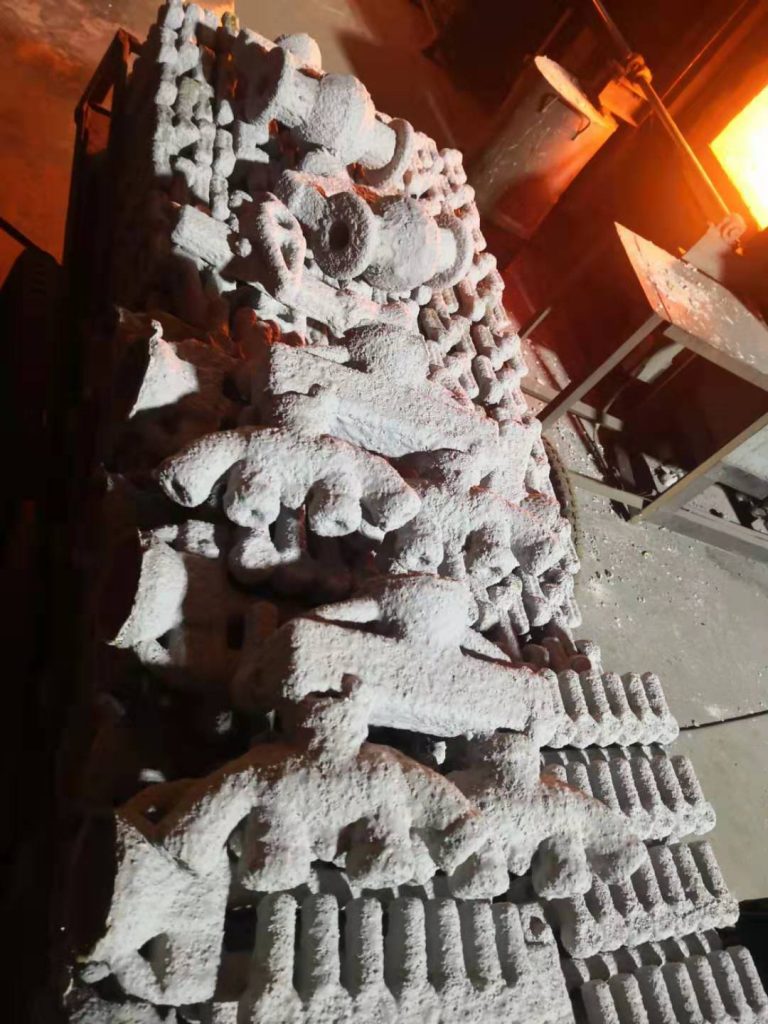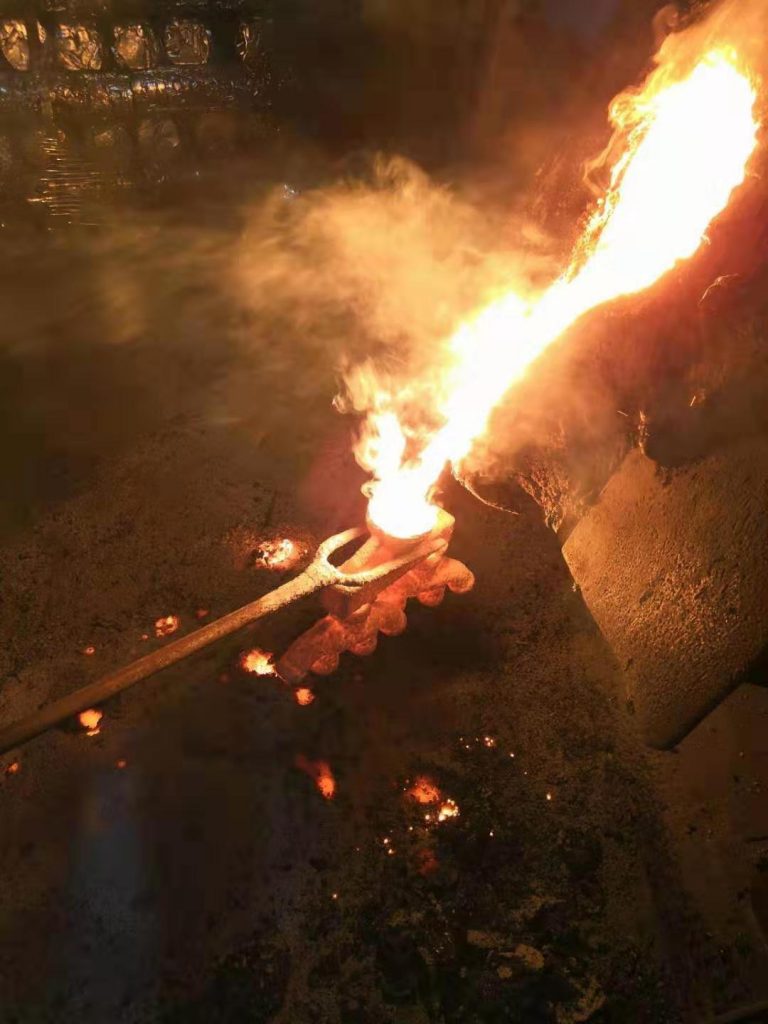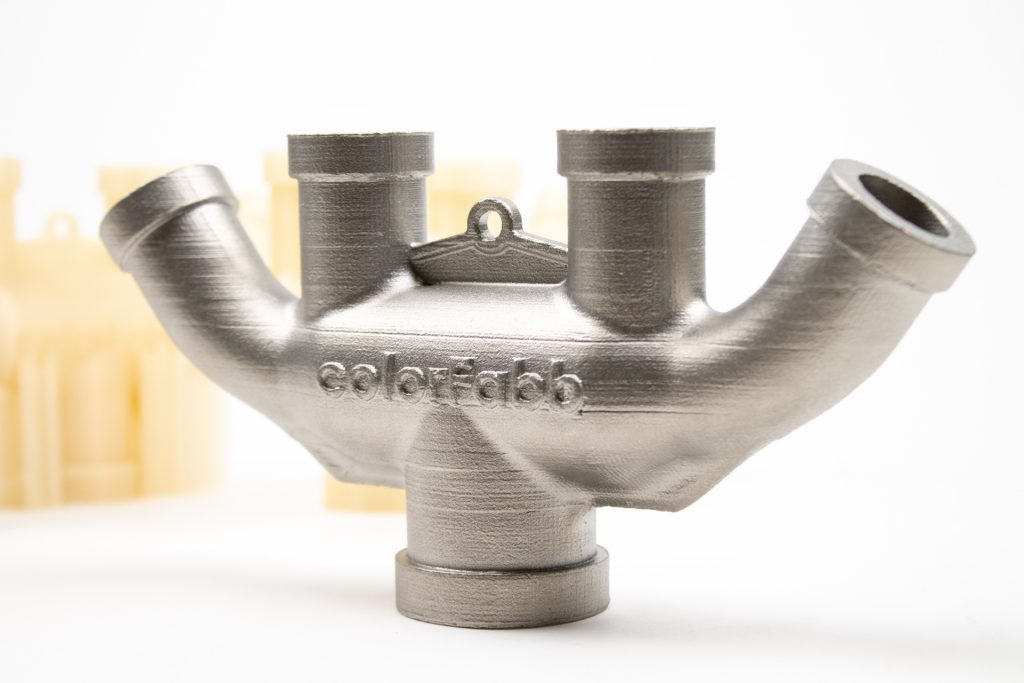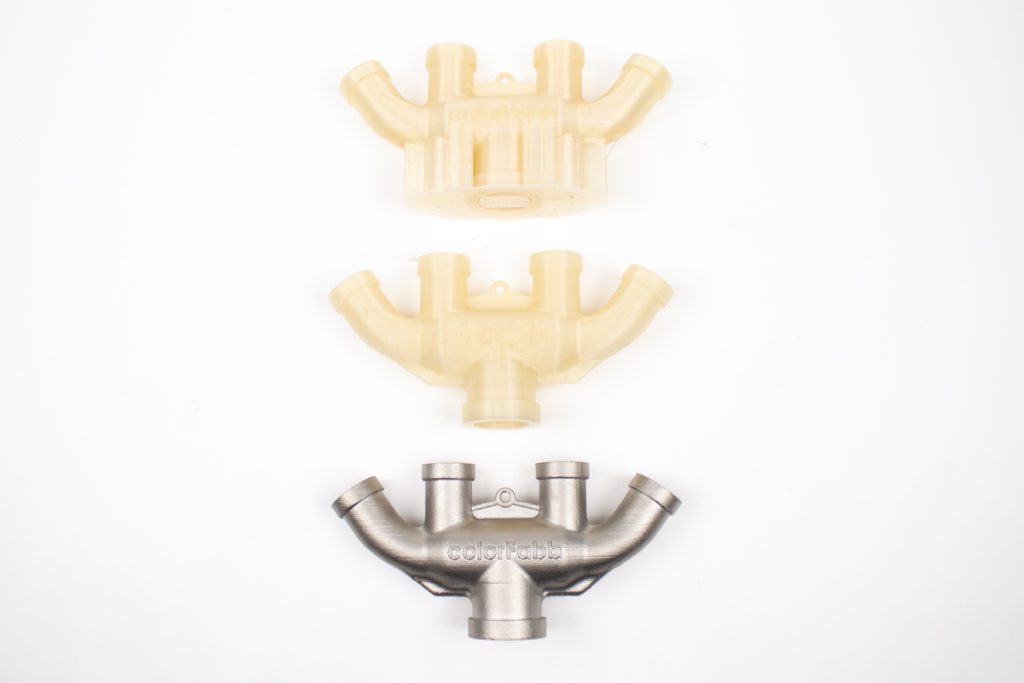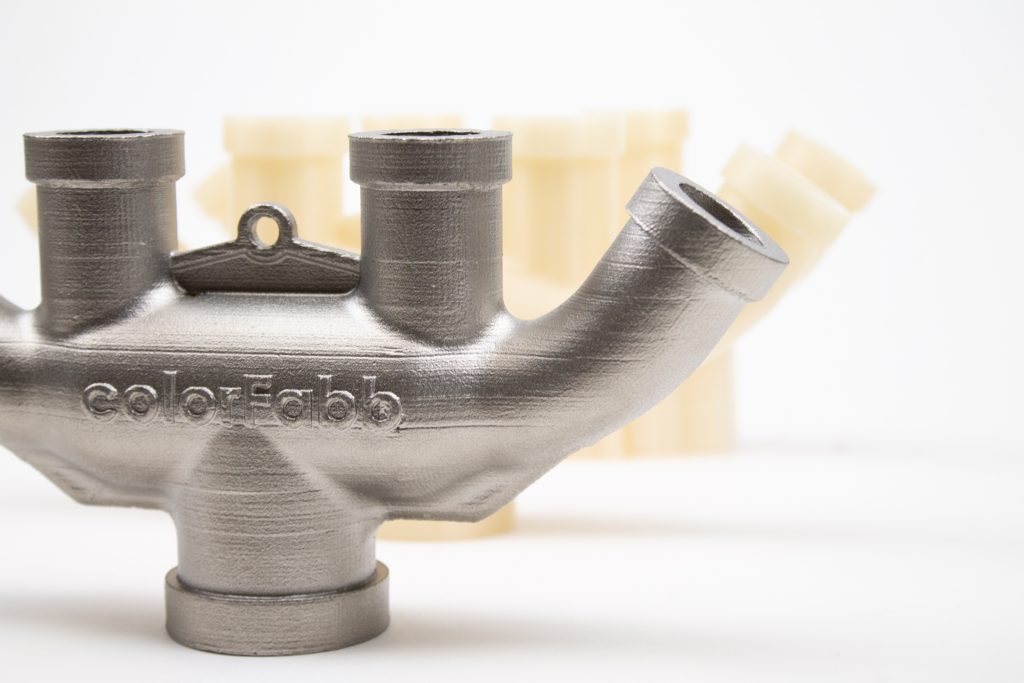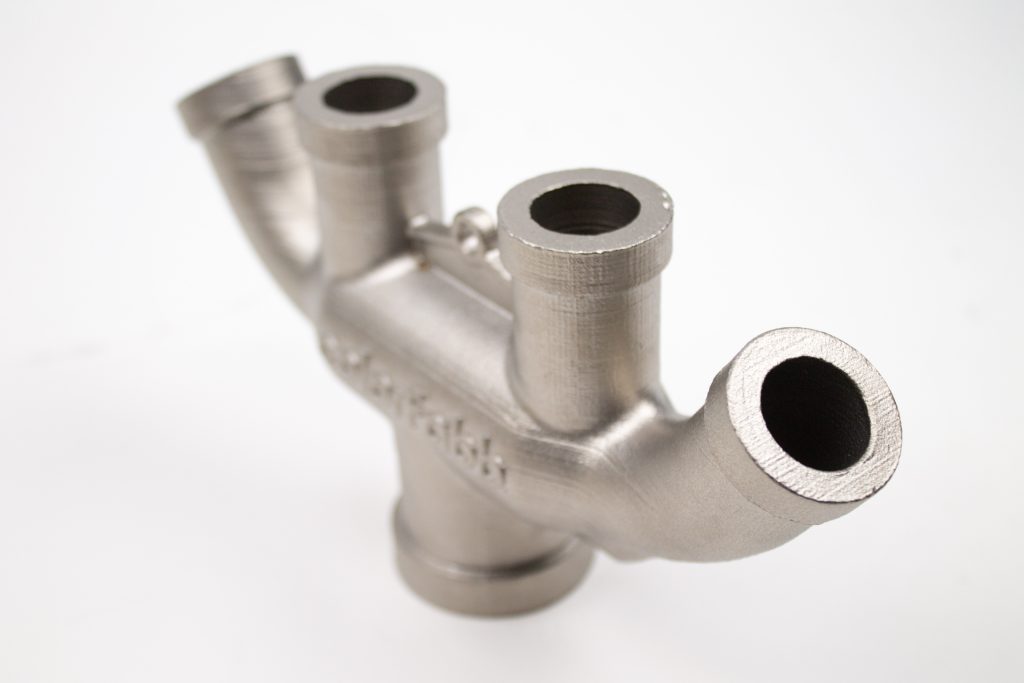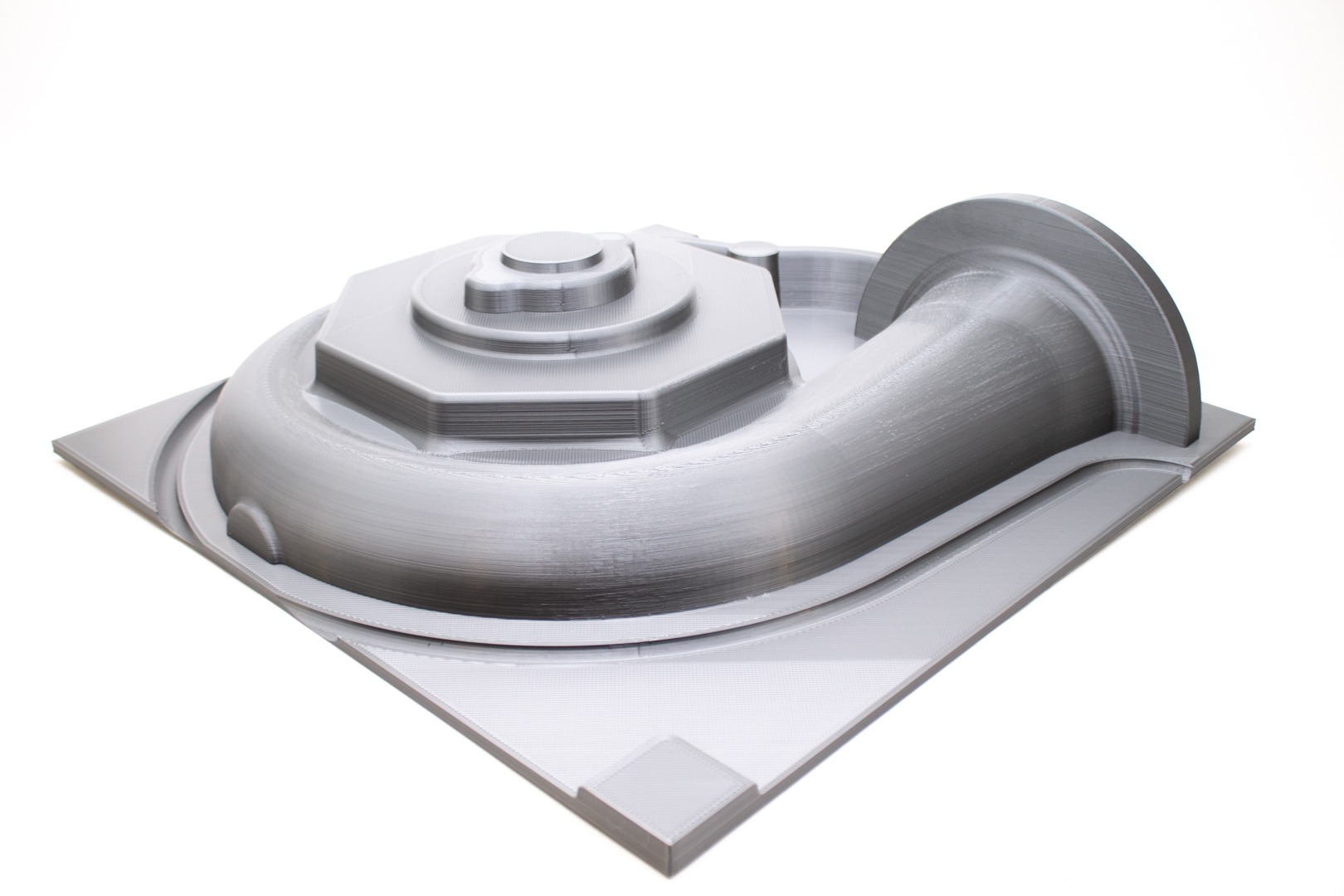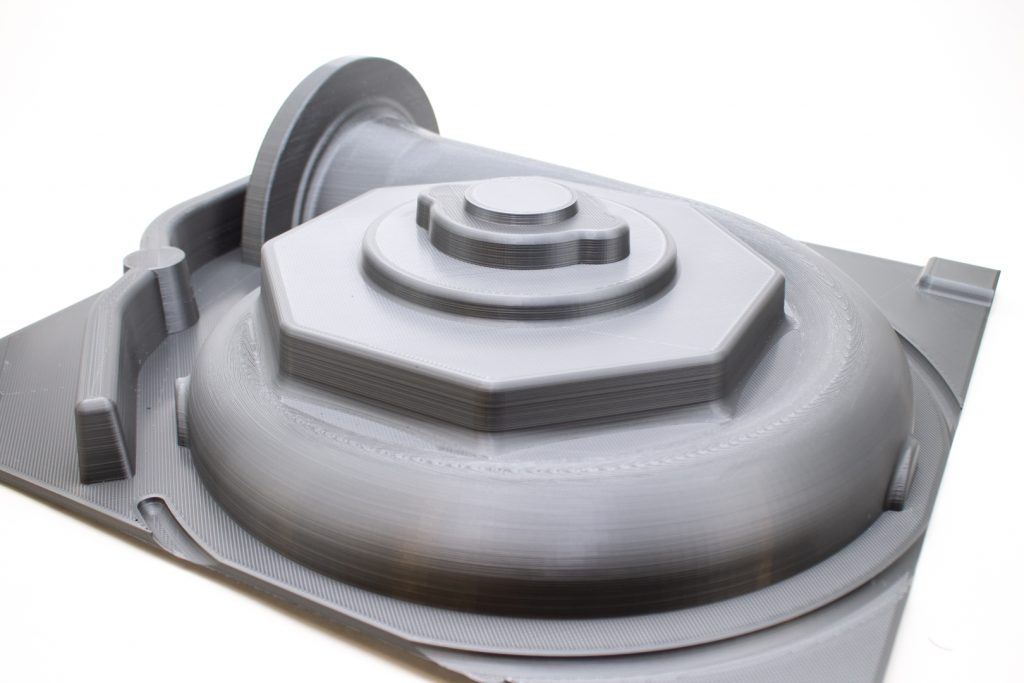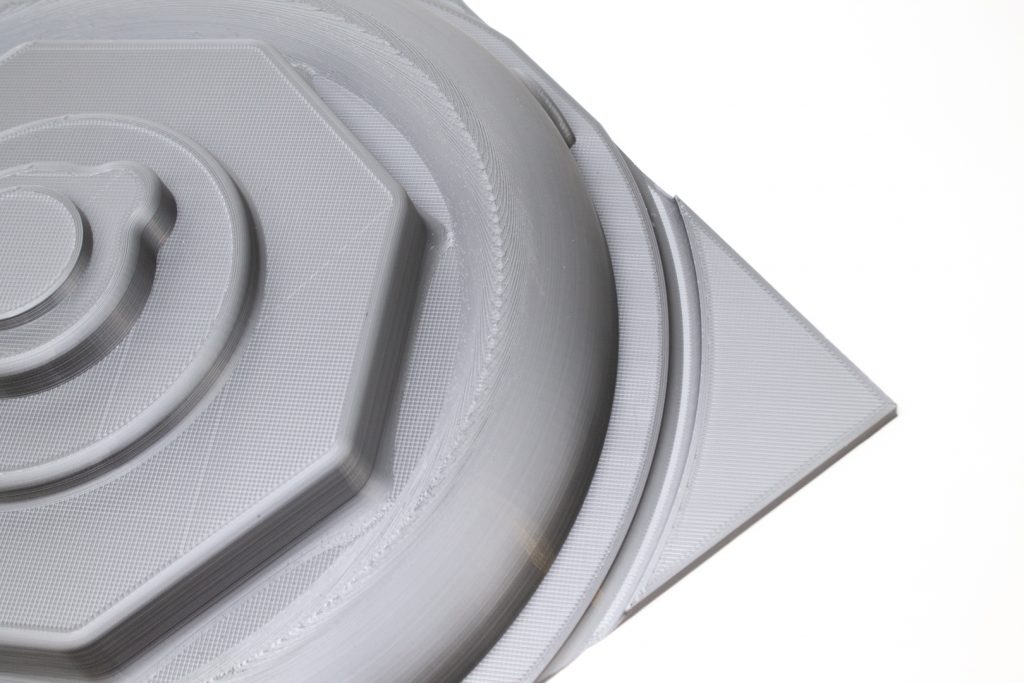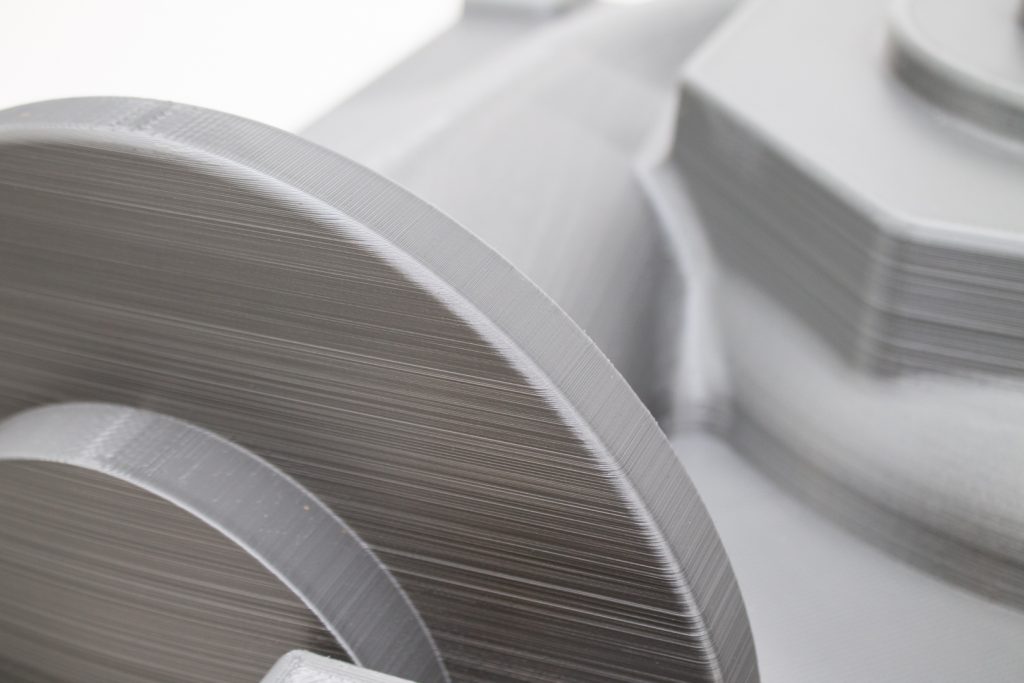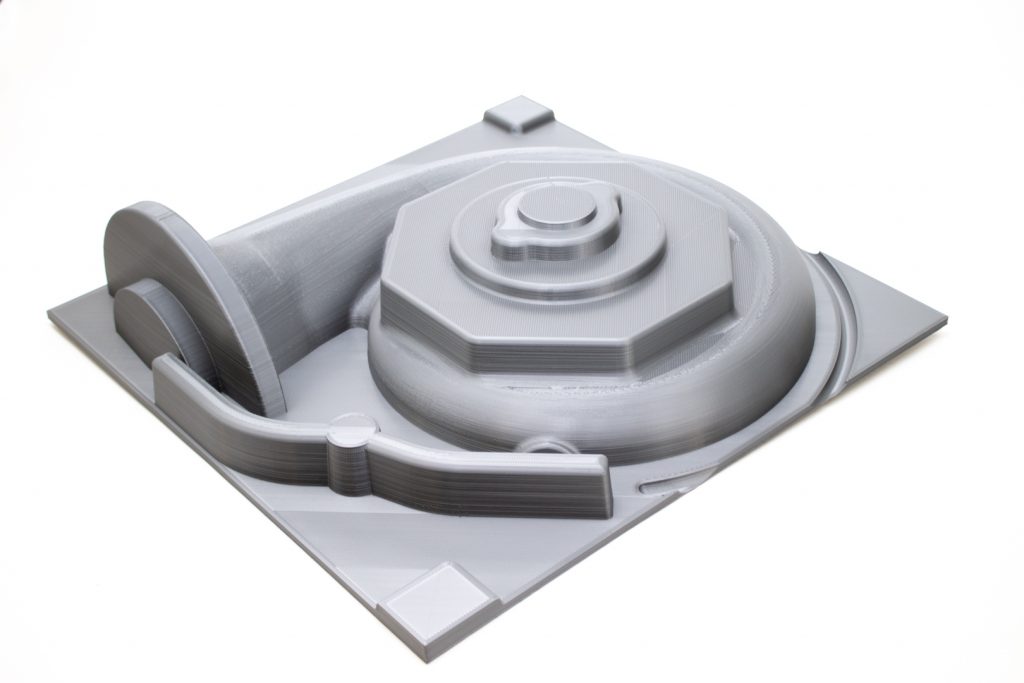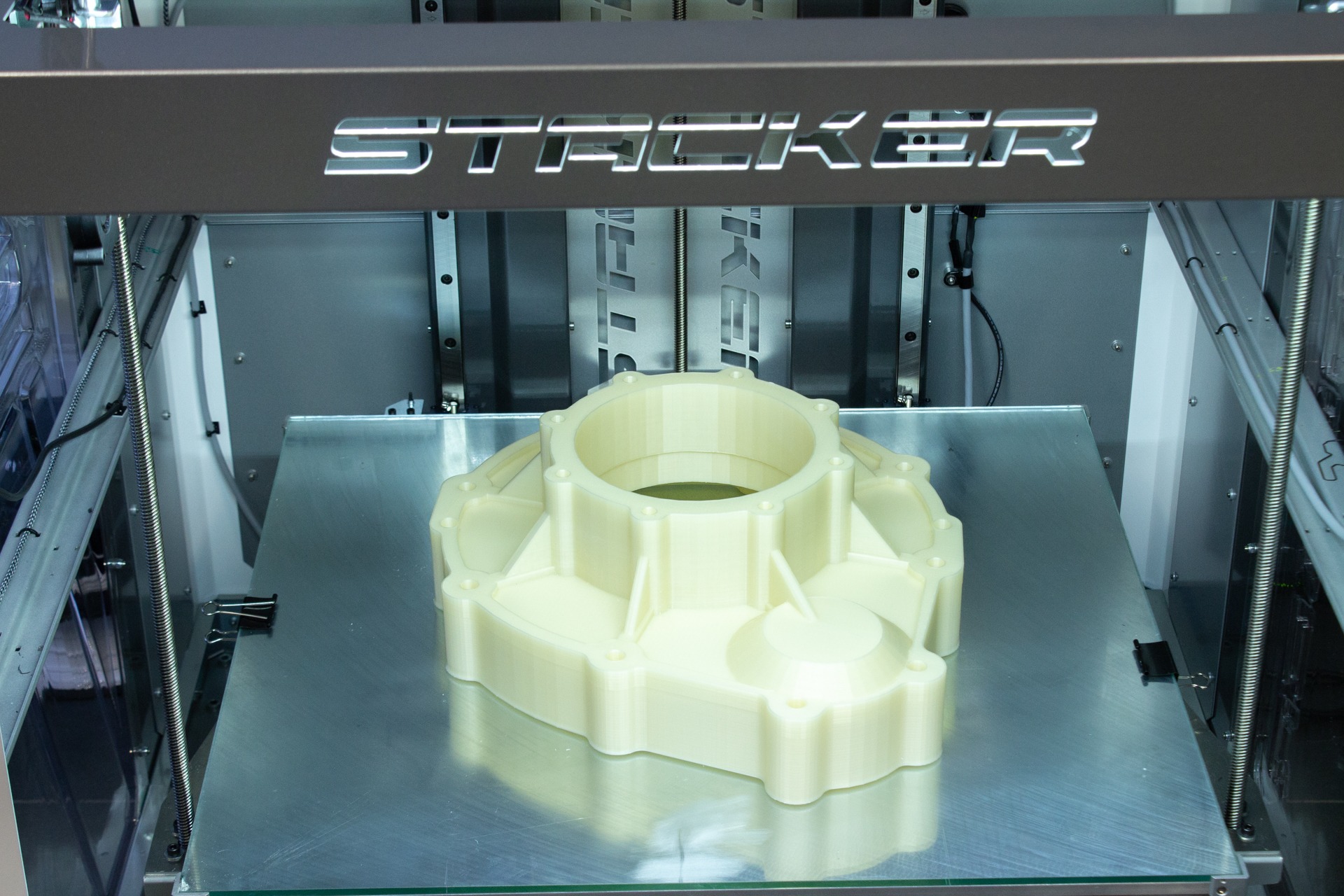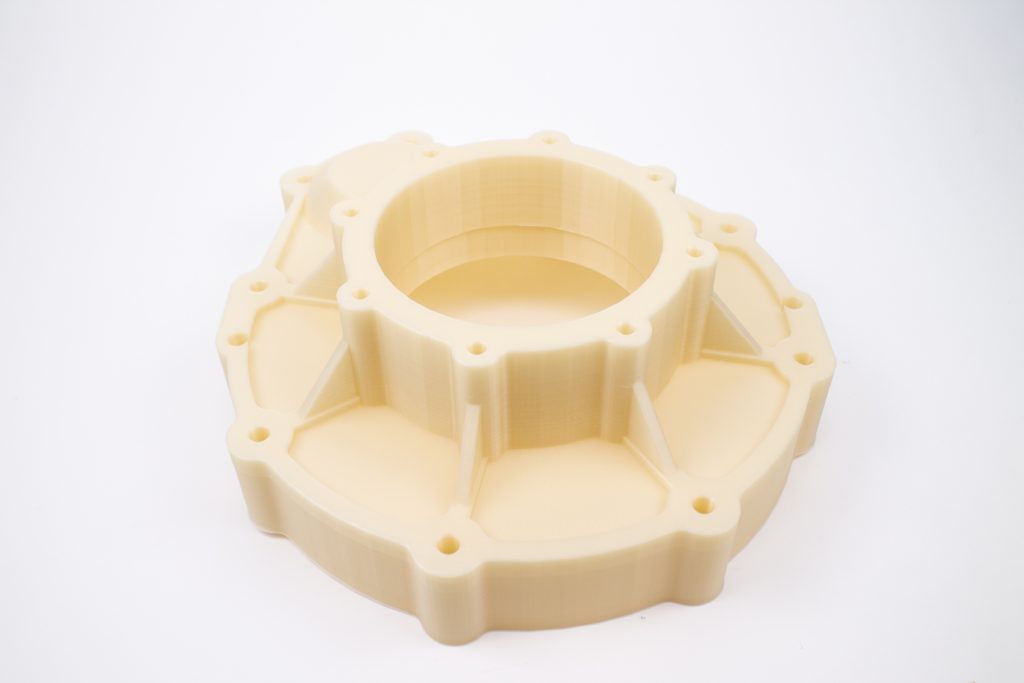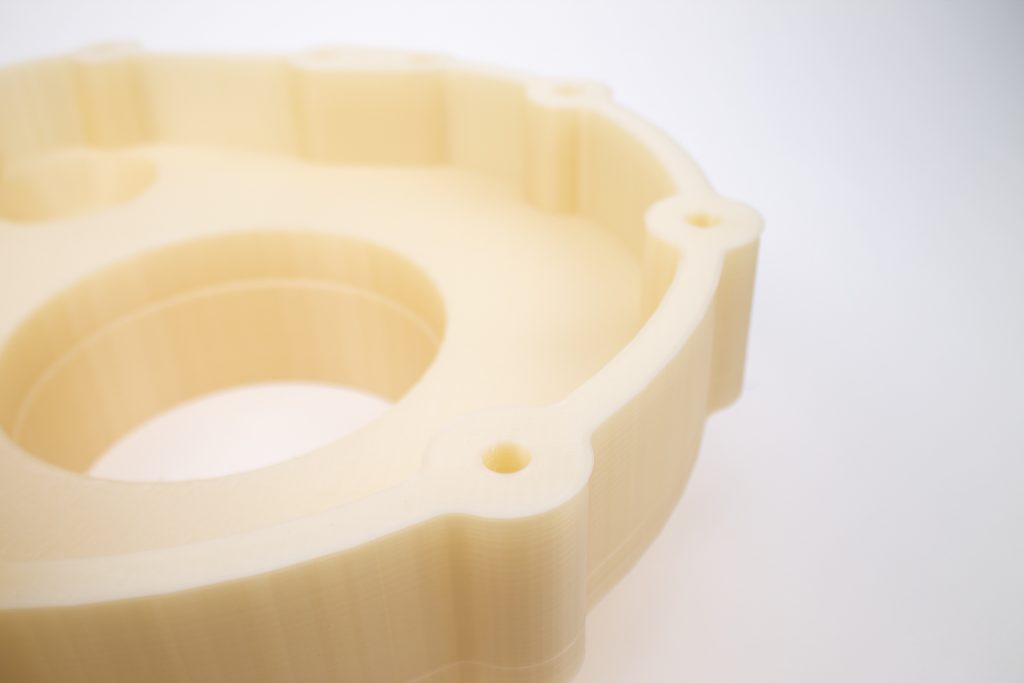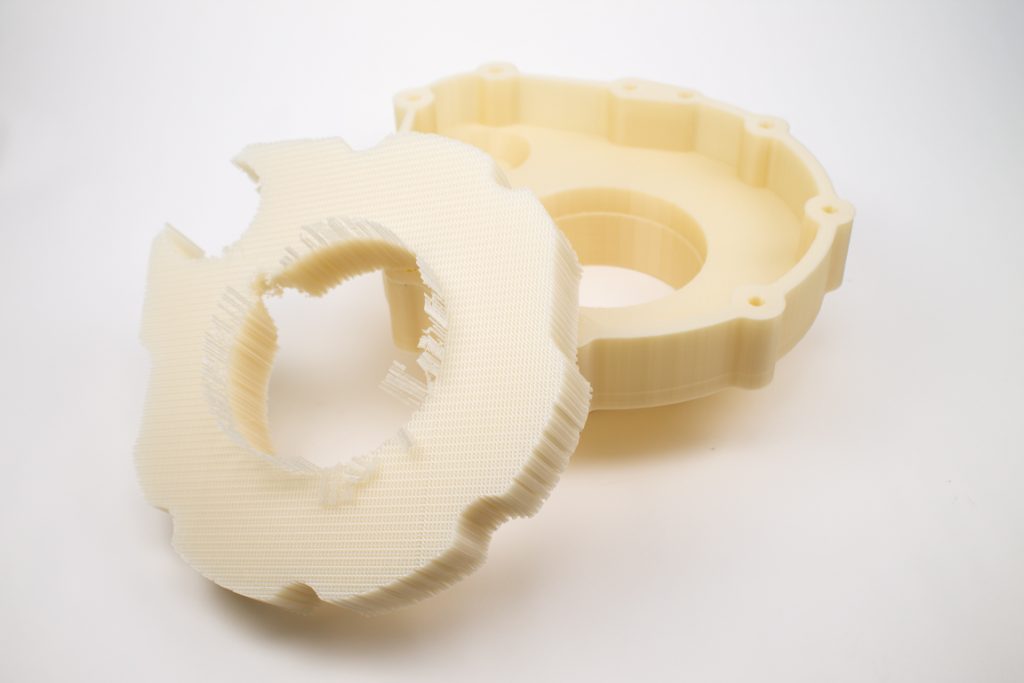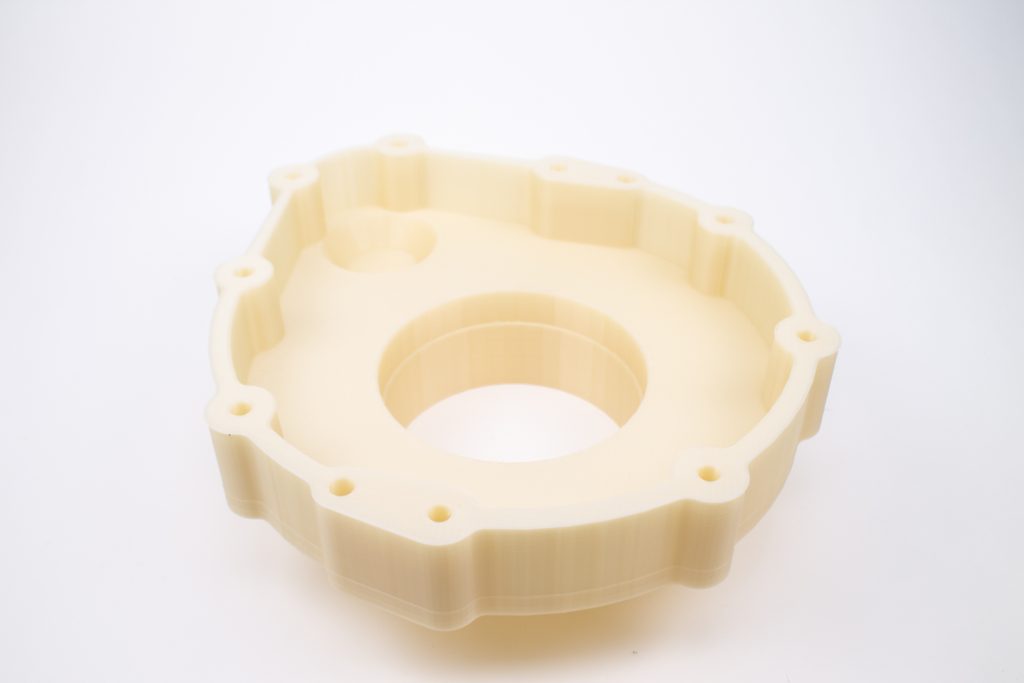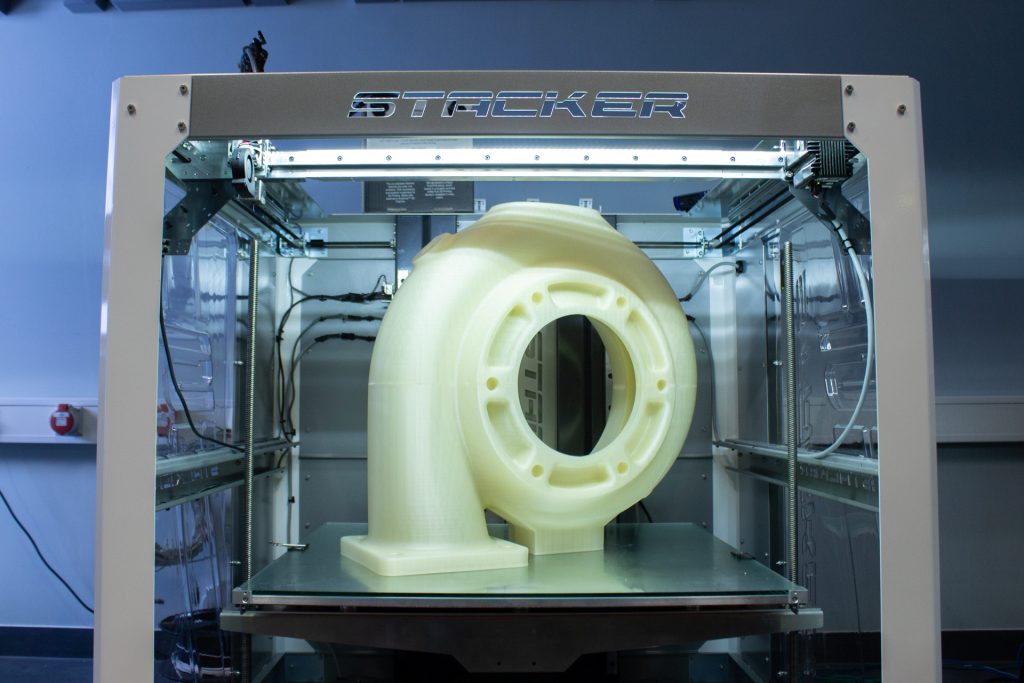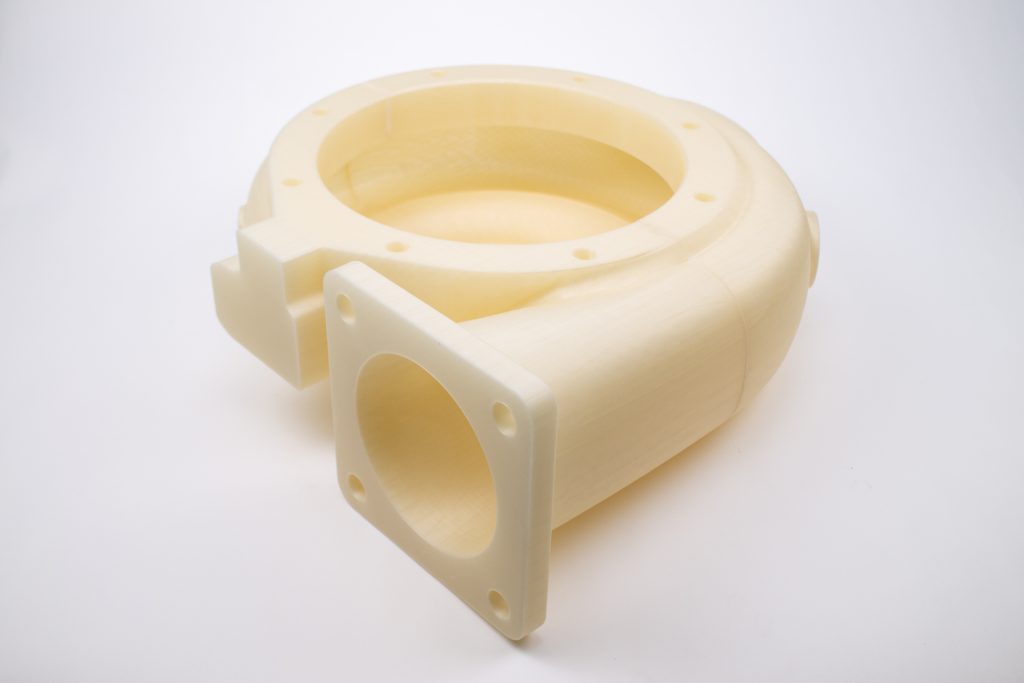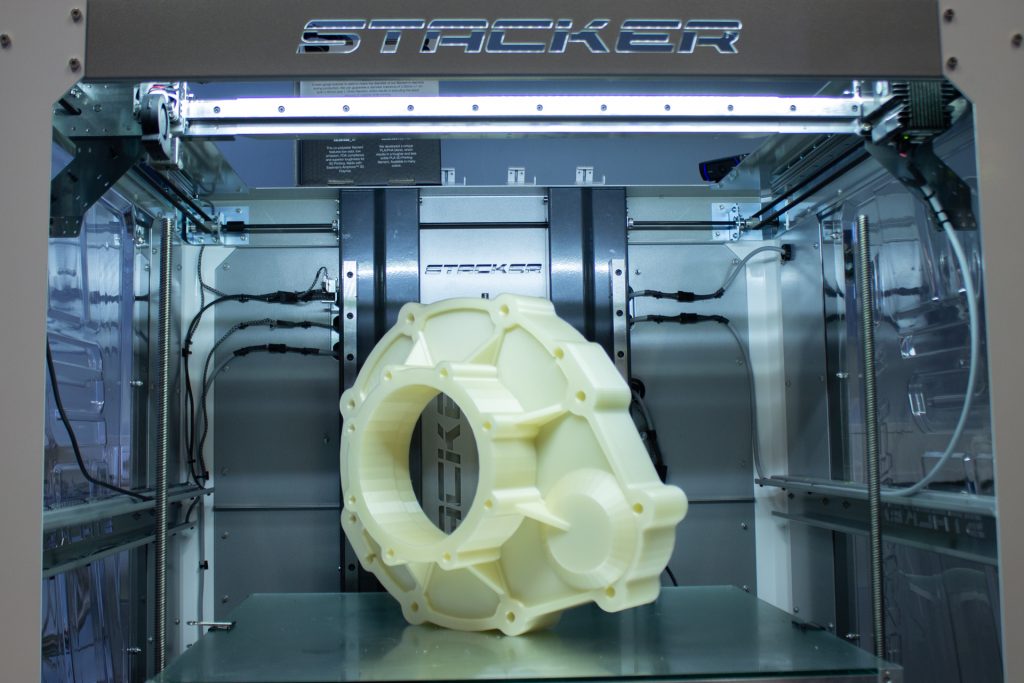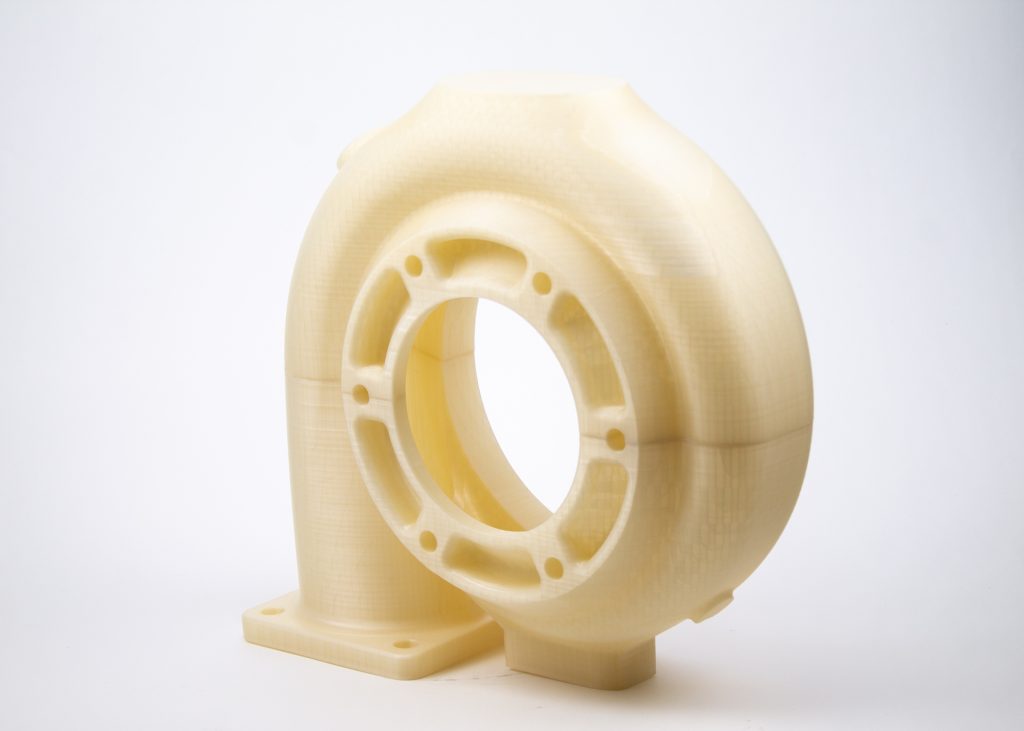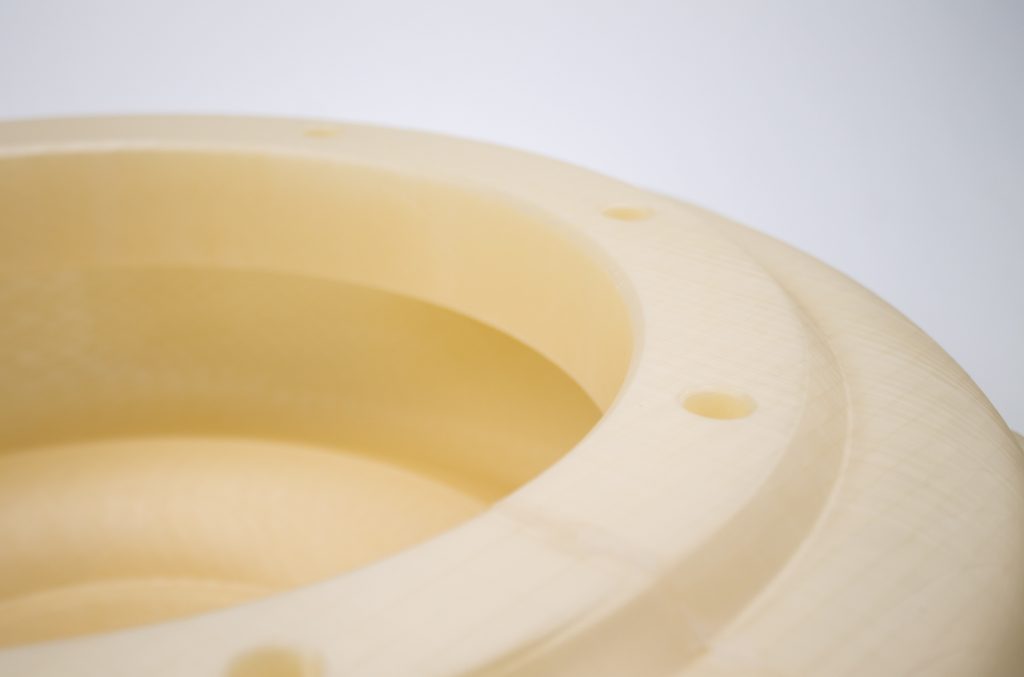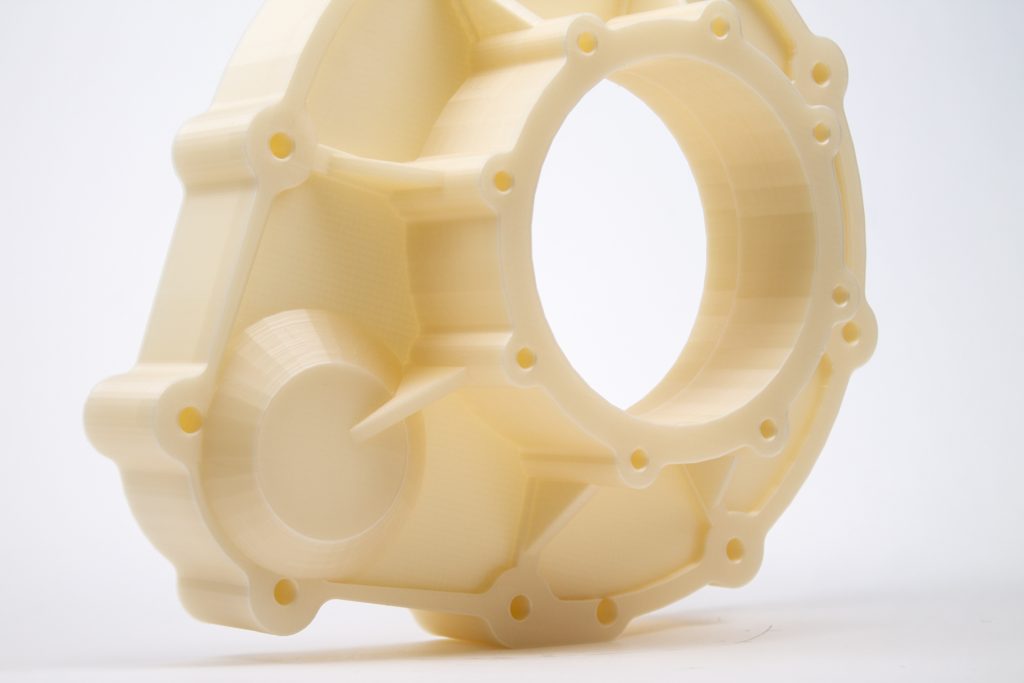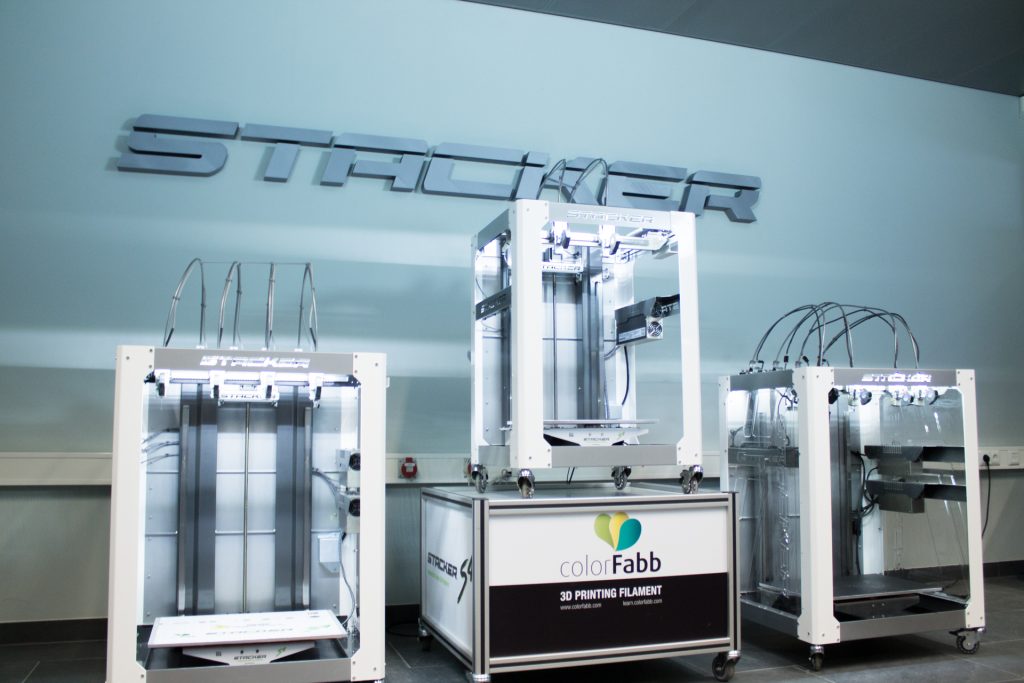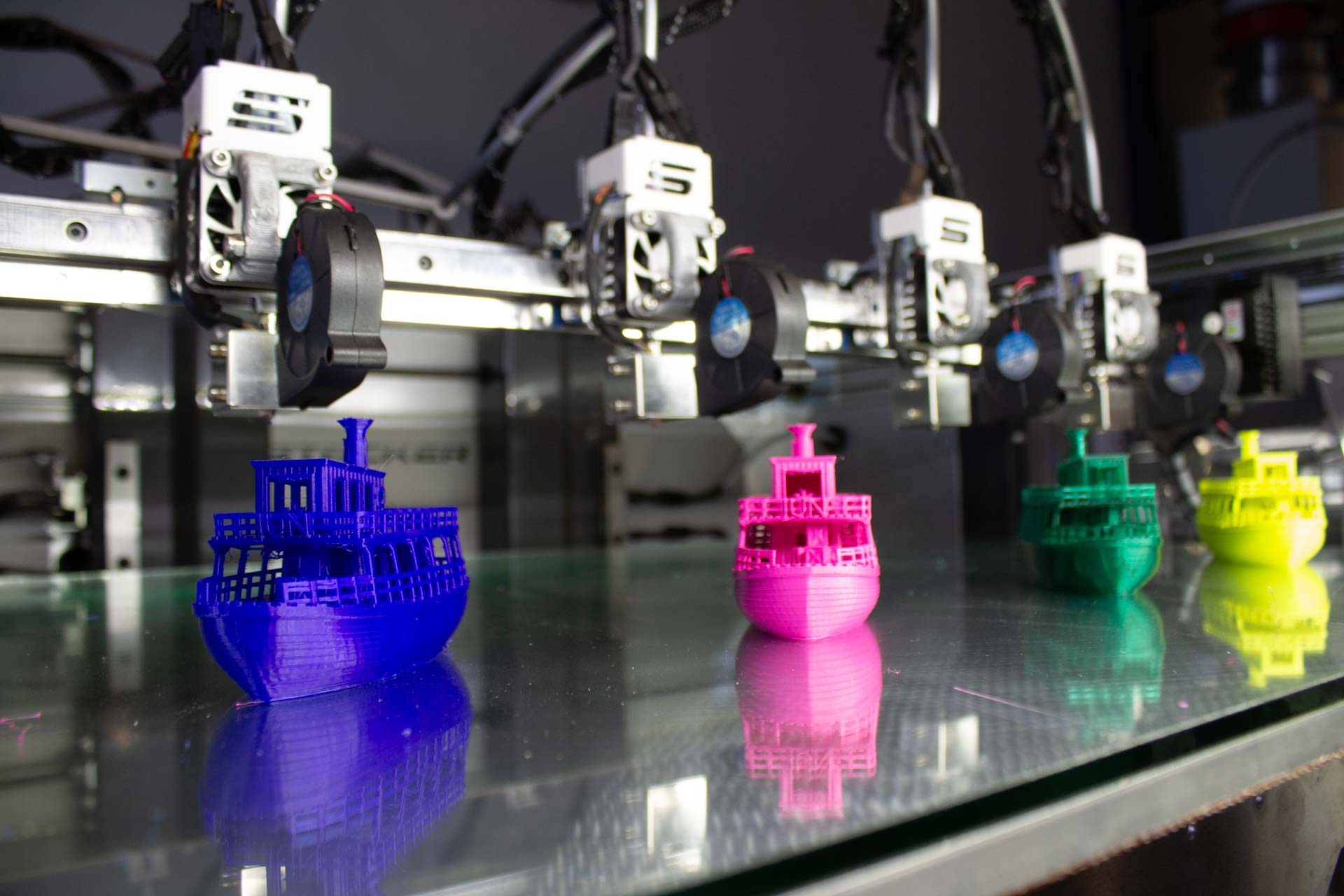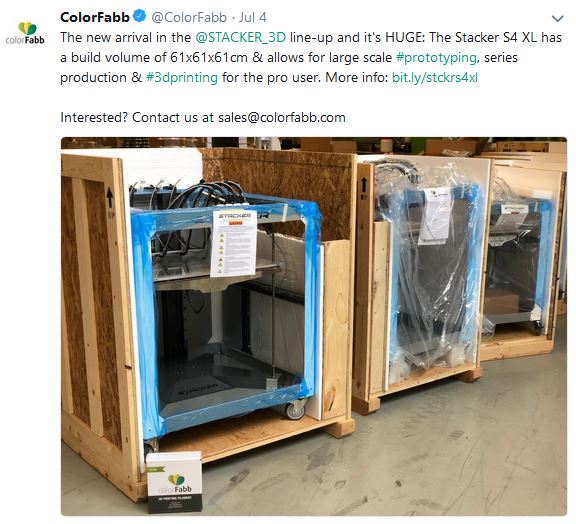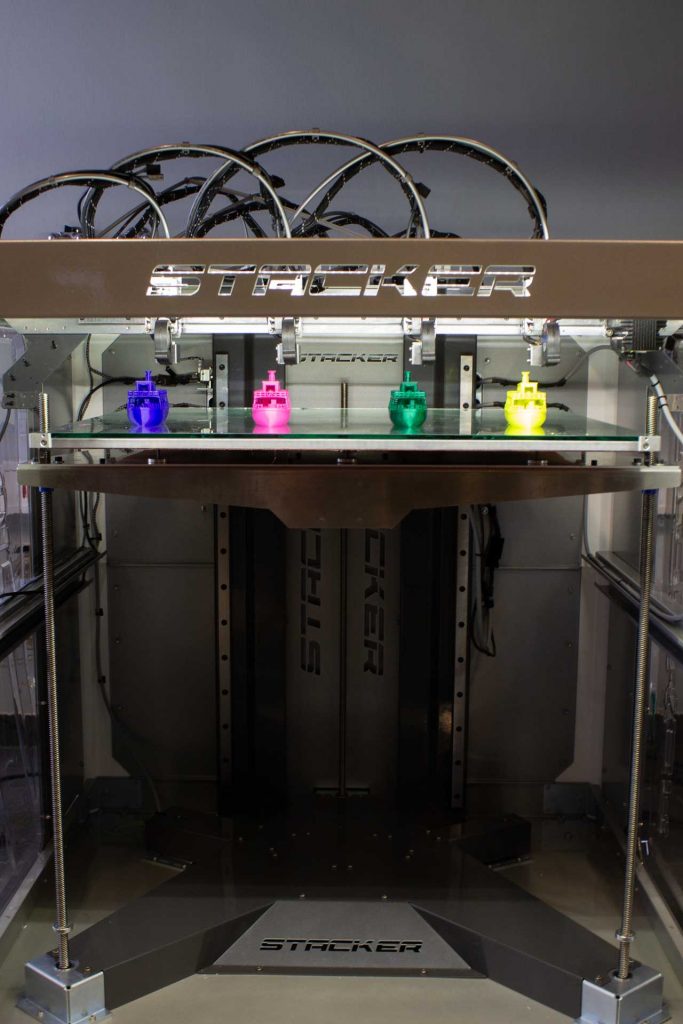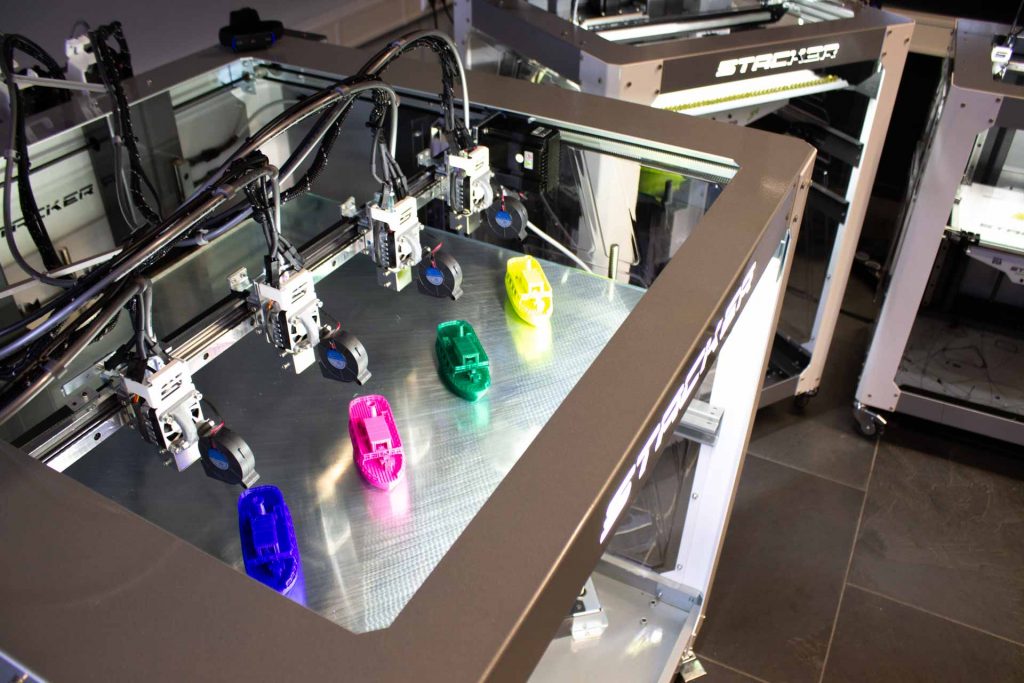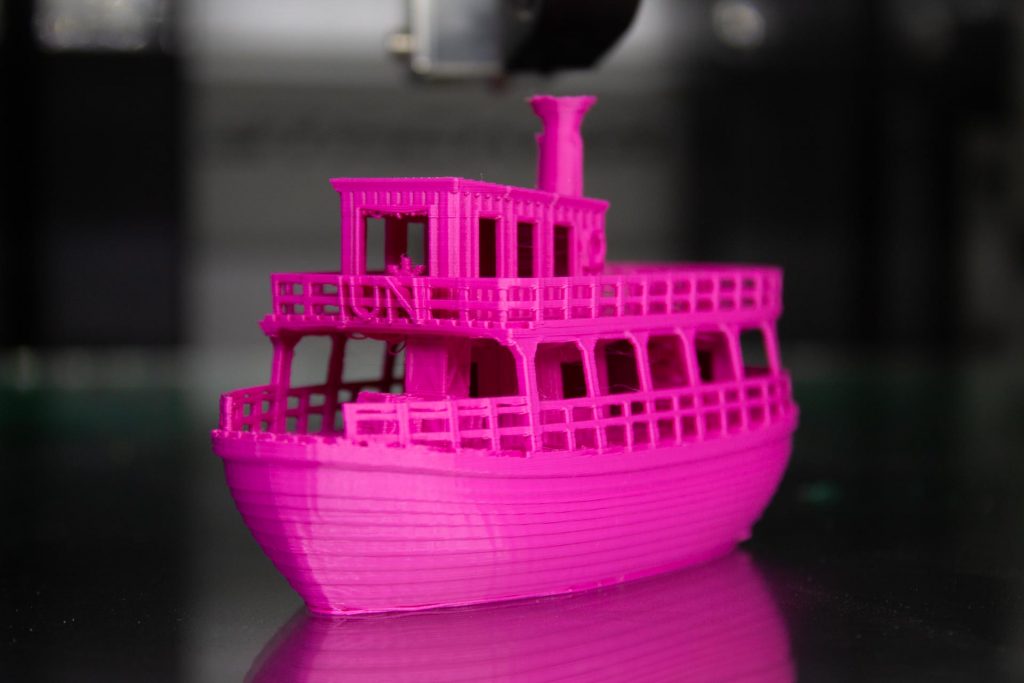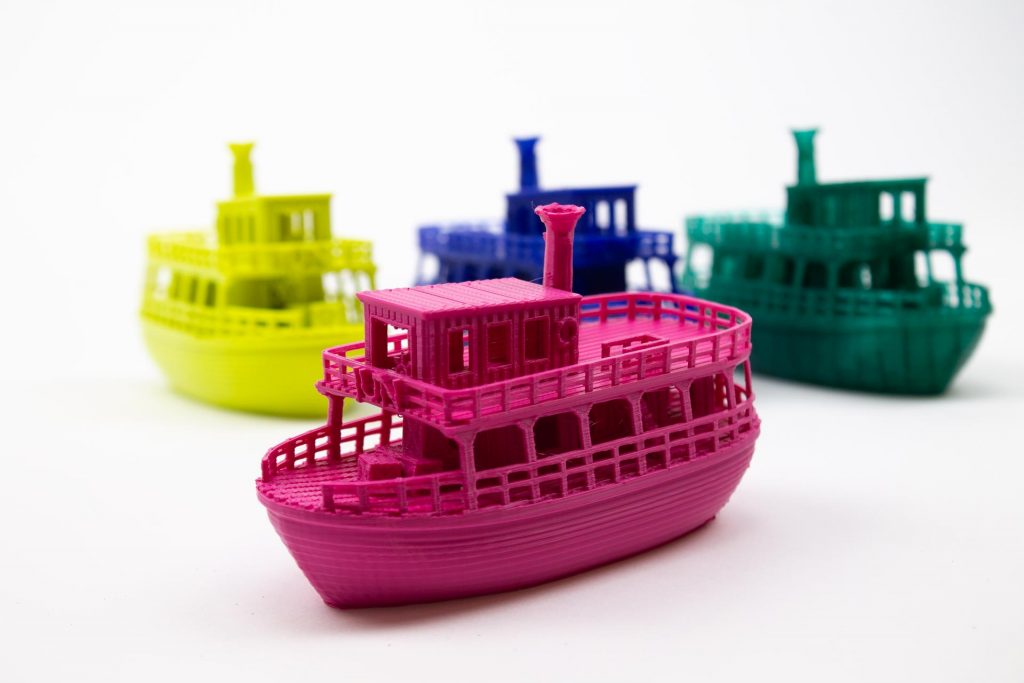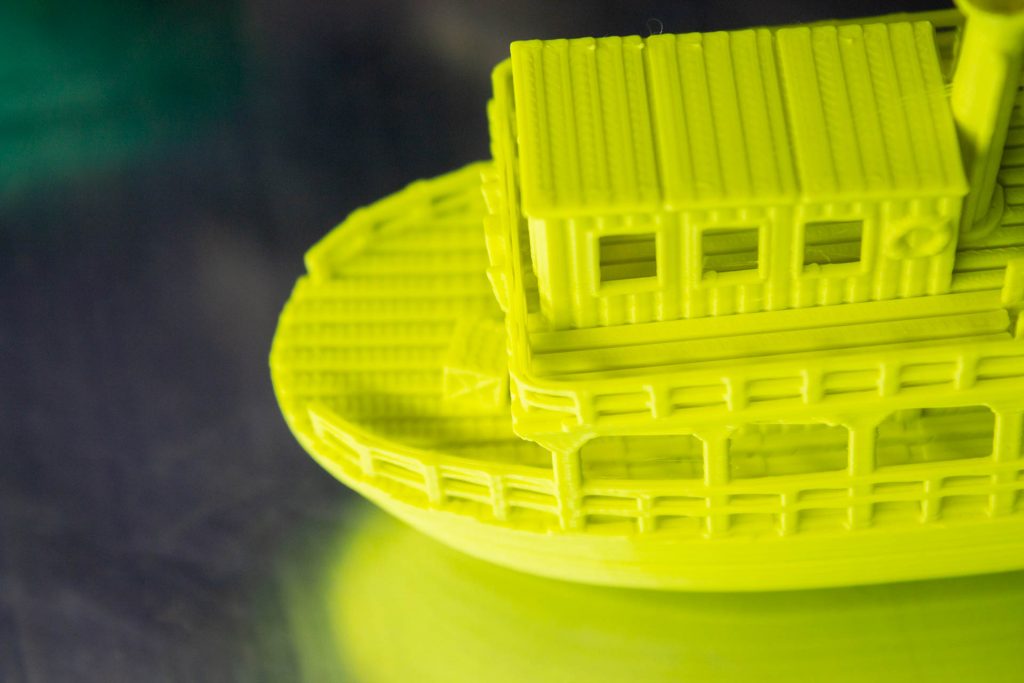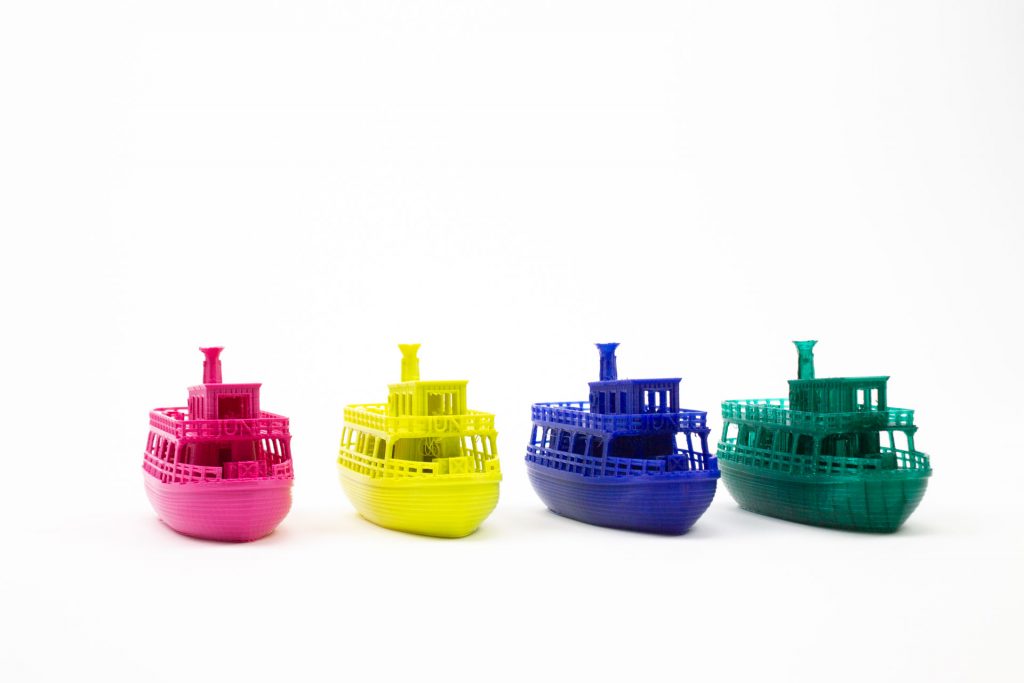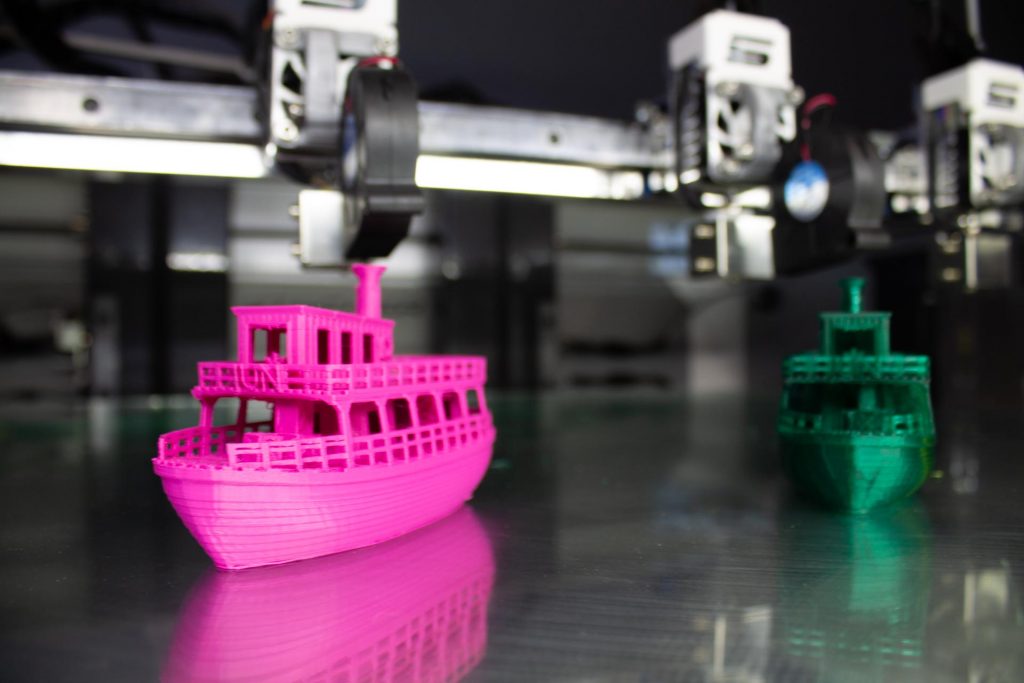Every material has its right application. Our woodFill is mostly decorative and we came across a great world map that begged to be scaled at 300% and put up as a fitting decoration for a baby’s nursery.
Design by 2c2know (design link)
Lasting for over 75 hours, it took quite a while to print dozens and dozens of parts. (Add to that the 3+ hours to organize and put up this puzzle). We printed on the Stacker S4 XL, its largest model, with a 0.8mm nozzle and at 0.35mm layer height (with 15% infill). The print temperature was 220C and we had the bed heated at 65C
Launched in 2013, woodFill was our first special 3D printing filament. It has been a bestseller for over 6 years and we fully understand why: the ease of printing, the authentic wood structure and the smell of wood while printing make it a fan favorite. Read more about woodFill and its origins in last year’s blog.
As with most large prints we printed this world map on the Stacker S4 XL. It is next generation industrial grade 3D printing, based on the technology and experience of the S2 and S4 printers. Featuring unique closed loop servo motor system and a massive 61cm build space (in all directions), the Stacker S4 XL is the ultimate production platform within FDM for large scale and small series 3D printing. As you can see it also works very well for decorative printing, like this world map where needed a certain size!
As many of you know, we are the distributor of Stacker 3D printers in Europe. We have been working with Stacker ever since their first prototype and now have several in our print lab. In the past 7 years we have seen 3D printing emerging from a hobby market to more professional uses. A lot of our users are using 3D printing to make a living or at least support their business in one way or another. We recently published two blogs about Dutch companies Optima and Mifa and their use of Stacker 3D printers.

For Stacker the term “industrial grade” is not a hollow marketing term. It means their printers are designed for extra long service life, extremely low maintenance and that the printer will maintain its positional accuracy throughout its life cycle. This printer has been designed to be used in a professional environment, be it for large prototypes or small series production.
Interested? Get a quote or contact us!
